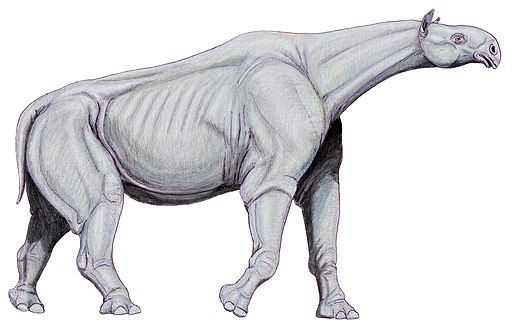The Giant Hornless Rhinoceros
Paraceratherium, also known as Indricotherium, was an enormous herbivorous mammal that lived during the Oligocene and Miocene epochs, about 34 to 23 million years ago.

| Meaning | Near the horned beast [Para–cera–therium] |
| Pronunciation | par-ah-ser-ah-THEE-ree-um |
| When: | Oligocene (about 34–23 million years ago) |
| Where: | Asia (China, Mongolia, Pakistan) |
| What: | Mammal (giant hornless rhinoceros) |
| Weight: | Estimated around 15–20 metric tons |
| Length: | Approximately 8 meters (26 feet) in length, with a height at the shoulder of about 5 meters (16 feet) |
| Diet: | Herbivorous (ate leaves, shrubs, and other vegetation) |
| Discovered: | First described by Forster Cooper in 1911 |
It is considered one of the largest land mammals to have ever existed, towering over modern elephants with an estimated height of up to 5.5 meters (18 feet) at the shoulder.
Despite its massive size, Paraceratherium had a relatively slender build and lacked the characteristic horn of modern rhinos.
It likely fed on leaves and branches in the forests and savannas of Eurasia.
Fossils of Paraceratherium have been found in regions ranging from China to Eastern Europe.
